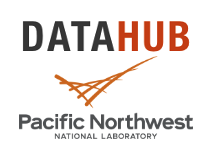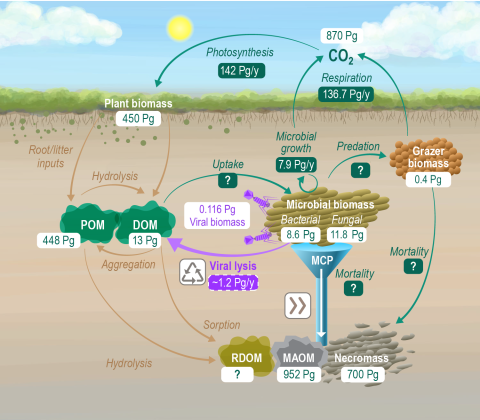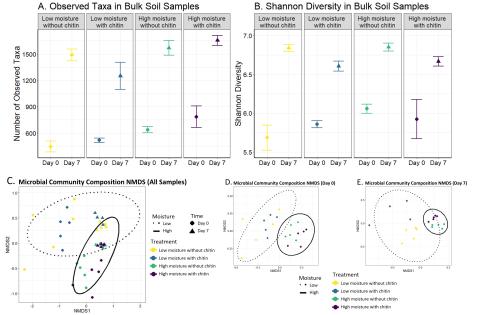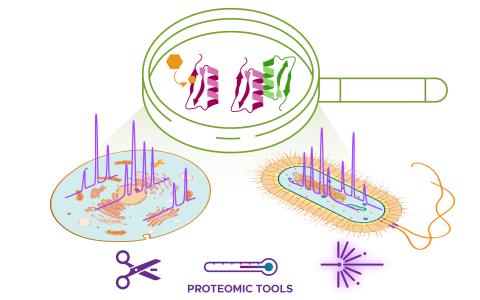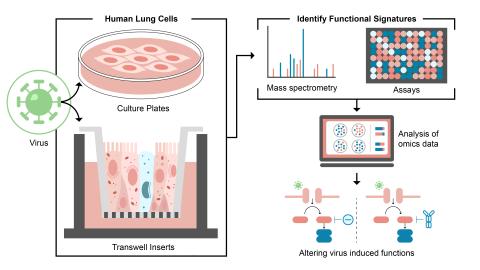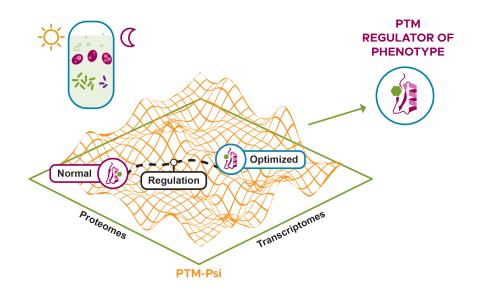Please cite as : Rodríguez-Ramos, Josué, Natalie Sadler, Elias K. Zegeye, Yuliya Farris, Samuel Purvine, Sneha Couvillion, William C. Nelson, and Kirsten Hofmockel. Environmental matrix and moisture are key determinants of microbial phenotypes expressed in a reduced complexity soil-analog. [Data Set...
Filter results
Category
- (-) Scientific Discovery (369)
- Biology (258)
- Earth System Science (161)
- Human Health (112)
- Integrative Omics (73)
- Microbiome Science (47)
- National Security (31)
- Computational Research (25)
- Computing & Analytics (17)
- Chemical & Biological Signatures Science (12)
- Energy Resiliency (12)
- Weapons of Mass Effect (12)
- Chemistry (10)
- Data Analytics & Machine Learning (9)
- Computational Mathematics & Statistics (7)
- Materials Science (7)
- Atmospheric Science (6)
- Data Analytics & Machine Learning (6)
- Renewable Energy (6)
- Visual Analytics (6)
- Coastal Science (4)
- Ecosystem Science (4)
- Energy Storage (3)
- Plant Science (3)
- Solar Energy (3)
- Bioenergy Technologies (2)
- Cybersecurity (2)
- Distribution (2)
- Electric Grid Modernization (2)
- Energy Efficiency (2)
- Grid Cybersecurity (2)
- Transportation (2)
- Computational Mathematics & Statistics (1)
- Grid Analytics (1)
- High-Performance Computing (1)
- Subsurface Science (1)
- Terrestrial Aquatics (1)
- Wind Energy (1)
Tags
- Virology (77)
- Immune Response (51)
- Time Sampled Measurement Datasets (51)
- Differential Expression Analysis (46)
- Gene expression profile data (45)
- Homo sapiens (42)
- Predictive Phenomics (34)
- Mass spectrometry data (32)
- Multi-Omics (32)
- Viruses (27)
- Omics (26)
- Mass Spectrometry (24)
- Health (23)
- Soil Microbiology (23)
- Virus (23)
- MERS-CoV (19)
- Mus musculus (19)
- Proteomics (18)
- sequencing (13)
- West Nile virus (13)
- Genomics (12)
- High Throughput Sequencing (11)
- Influenza A (11)
- TA2 (11)
- Metagenomics (10)
- PerCon SFA (10)
- S. elongatus PCC 7942 (10)
- TA1 (10)
- Ebola (9)
- Microbiome (8)
Original data published and available from Zenodo at: https://doi.org/10.5281/zenodo.13839485 Please cite as : Zimmerman, A., & Hofmockel, K. (2024). Global terrestrial carbon pools and fluxes [Data set]. In Global Change Biology. Zenodo. https://doi.org/10.5281/zenodo.13839485 This file contains a...
Category
Please cite as : Nicholas J Reichart, Sheryl Bell, Vanessa A. Garayburu-Caruso, Natalie Sadler, Sharon Zhao, Kirsten Hofmockel. Chitin Decomposition 16S rRNA gene fastq. 2024 . [Data Set] PNNL DataHub. 10.25584/2475041. This data is published under a CC0 license . The authors encourage data reuse...
Category
Created on 2024-10-16T17:27:40+00:00 by LN Anderson and is pending updates.
Created on 2024-10-16T17:27:40+00:00 by LN Anderson . Pending updates will be available for public release before or by 2025-10-01.
Created on 2025-06-10T00:34:54+00:00 by LN Anderson
Created on 2024-10-16T17:27:40+00:00 by LN Anderson . Pending updates will be available for public release before or by 2025-10-01.
Created on 2024-10-15T19:55:00+00:00 by LN Anderson ; Last updated 2024-11-13T15:01:44+00:00 and is pending public release before or by 2025-10-01. Human Liver Epithelium Response to HCoV-229E Infection Epigenomics (ACS-DP4) The purpose of this experiment was to evaluate how wild-type Human...
Category
Created on 2024-10-15T19:55:00+00:00 by LN Anderson ; Last updated 2024-11-13T15:01:44+00:00 and is pending public release before or by 2025-10-01. Human Primary Airway Epithelium Response to HCoV-229E Infection Transcriptomics (ACS-DP3) The purpose of this experiment was to evaluate the human host...
Category
Created on 2024-10-14T20:33:54+00:00 by LN Anderson pending updates.
Category
Created on 2024-10-14T20:33:54+00:00 by LN Anderson ; Last Updated 2024-11-13T15:01:44+00:00 and is pending public release. S. elongatus PCC 7942 Carbon Metabolism Proteomics (MC-DP2) The purpose of this experiment was to understand the regulatory dynamics of carbon fixation in S. elongatus PCC 7942...
Category
Created on 2024-10-14T20:33:54+00:00 by LN Anderson . Pending updates will be available for public release before or by 2025-10-01.
Category
Created on updated 2024-10-01T21:34:23+00:00 by LN Anderson ; Last updated 2024-11-13T15:01:44+00:00 and is pending public release. Human Host Cellular Response to HCoV-229E Infection Proteomics (ACS-JM-DP2) The purpose of this experiment was to evaluate the human host cellular response to wild-type...
Created 2024-09-17T19:19:38+00:00 by LN Anderson ; Last updated 2024-10-17T17:30:32+00:00 and is pending public release. Human A549 and MRC5 Cell Response to HCoV-229E Infection Transcriptomics (ACS-DP1) The purpose of this experiment was to evaluate the human host cellular response to wild-type...
Category
Last updated on 2025-01-31T00:37:40+00:00 by LN Anderson High-density Lipoprotein (HDL) Structure and Function (JM-DP1) The purpose of this experiment was to investigate how the interactions between APOA1 and APOA2 on the surface of high-density lipoproteins (HDL) impact particle function...
